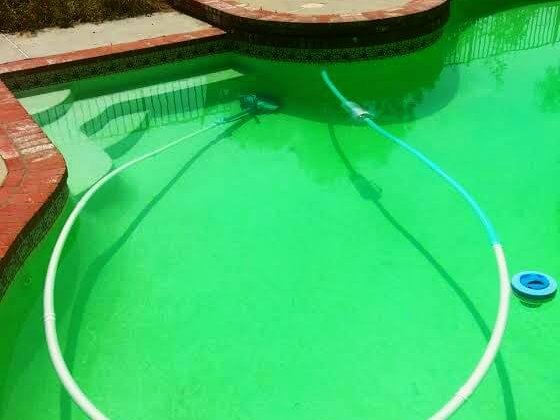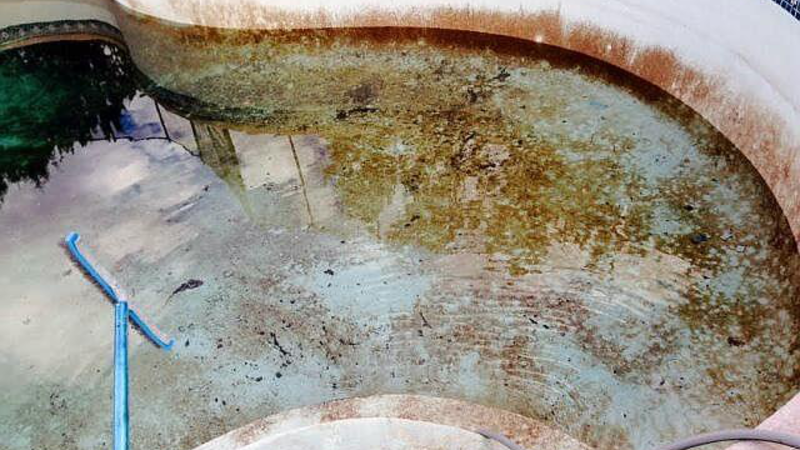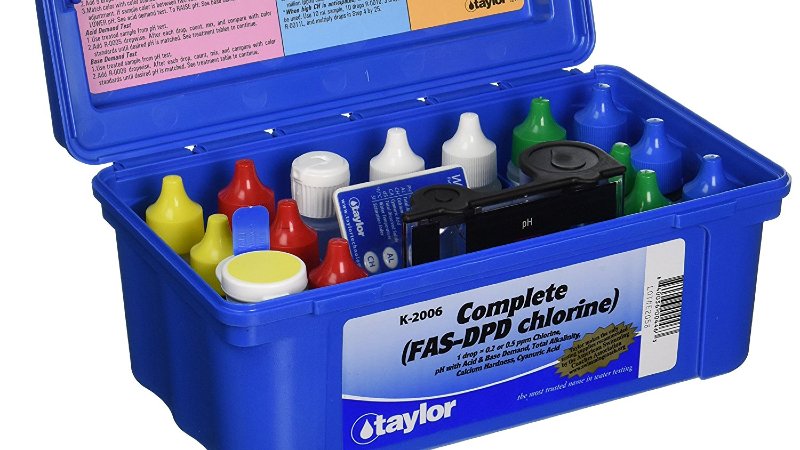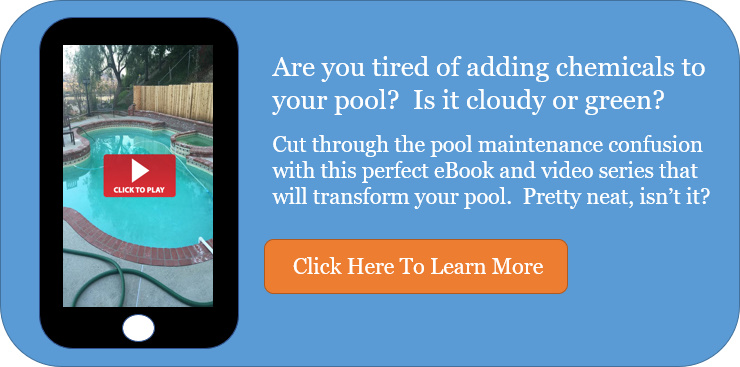Easy Pool Water Testing With Just A Few Steps
You're pool is now open. Everything seems in order, right? Looking forward to relaxing by your pool and those wonderful weekends? But is something missing? Maybe? Testing your pool water chemistry should be number one on your "Honey-Do" list. Testing your pool on a regular basis can ensure you'll have crystal clear and perfectly balanced water through the swimming season.
You probably know about chlorine and pH. But what if you have a salt pool? Or have well water with metals such as copper and iron? Or maybe phosphates?
Let's take an in-depth look at your pool water testing.
Why Pool Water Testing?
The combination of pool water testing and keeping your filter clean is the heart of water cleanliness. If the water is not tested on a regular basis, you might not know what your chemical levels are and that can lead to algae growth and bacteria. How do you know if your water is safe to swim in? How do you know if you have metals? Without testing, it's just a guessing game on our part.
I've been taking care of and clearing pools for over 22 years and even to this day I must take all the chemical readings so I know what I'm dealing with. Even after clearing over 700 pools since 1999, I'll walk into your backyard with my trusty Taylor K-2006 pool water test kit and take all of your chemical readings. It's the only way to know our starting point.
Test Pool Water Accurately
There are basically three ways to test your pool water and they are:
- Use a good test kit like the Taylor K-2006 or TF-100.
- Test strips.
- Digital pool testing.
- Take a sample of water to your local pool store.
Strips are easy and give a fairly good range, but are not as accurate as the K-2006 or TF-100.
How To Take A Pool Water Sample
The video above goes into detail about how to use a vial, or bottle, to collect your pool water sample, but if you missed it, let's read on. You will want to take your pool water sample away from the skimmer or returns. Make sure the container is clean. Any residue can skew your chemical readings.
- Hold the vial or container upside down.
- Insert the container into the water and go about elbow deep.
- Flip the container upright and bring it straight up out of the water.
How To Use Test Strips
These strips allow you to simply dip the strip into the pool water, or container filled with pool water, then compare the various squares on the strip to the corresponding chart. To use your test strips:
- Collect a sample of water using the above technique.
- Fully submerge the strip into the sample water for 2 - 3 seconds, then remove it.
- Hold the strip until the squares start to change color. This normally takes about 15 - 20 seconds. Do not shake the excess water off the test strip. This might give a wrong reading.
- Compare the strips color to those on the test strip bottle.
You have choices when it comes to test strips. Some test for chlorine, pH and alkalinity, while others are called 5-way test strips. These test for the aforementioned plus calcium hardness and cyanuric acid. You can also get test strips that test for salt and metals such as copper and iron.
How To Use Liquid Test Kit
The two pool water test kits I use and recommend are the Taylor K-2006 and TF-100. For quick and easy pool water testing, you can use use a basic 4-way kit that includes phenol red and orthotolidine (OTO) to test pH and chlorine. Your OTO kit comes with a 2 compartment vial. One side is for testing the pH and the other side tests for chlorine. To test your water using a 4-way test kit you will:
- Collect the water sample using the vials that are included with your test kit.
- Per the instructions for the pH, add the recommended number of drops of phenol red to the corresponding vial.
- Per the instructions for the chlorine, add the recommended number of drops of yellow OTO to the corresponding vial.
- Place the caps on the vials and gently shake for a few seconds to mix the solution.
- Hold the vials up to a white background and compare the colors of the sample water to the corresponding chemical chart. Bright red indicates a higher pH. Bright yellow going to orange indicates high chlorine. Light or faded yellow indicates a low level of chlorine.
Pool Store Water Testing
If you prefer, you can take a sample of water to your local pool store for testing and analysis. What I've noticed is they will use Reagents that can be found in a Taylor K-2005 and K-2006 kit. You will collect your water sample the same way as mentioned above.
When Should I Test My Pool Water?
You will want to test your pool water at minimum once per week, and your sanitizer level at least twice per week. If you trust your local pool store and they do a good job at testing your pool water, you can take a sample of water to them to test it for free, just to make sure you're on the right track.
Should I Test My Pool Water More Often?
You will want to test your pool water if you have reoccurring issues like metals if you're on well water. Even some city water municipalities can have metals, or higher than normal phosphates. Extra contaminants such as these can make it more difficult to maintain your pool water's chemical balance. By testing more often, you'll be keeping a closer eye on your pool water chemicals which means you'll also be preventing damage and costly repairs down the road.
Testing For Copper In Your Pool
Clear emerald green water is one of the first indicators of high copper levels in a pool. The picture below was of a customer's pool. He added 5 bottles of copper algaecide, then shocked his pool. Within an hour, his pool went from crystal clear to an emerald green. This can happen with an overdose of pool algaecide and from well water which is notorious for having high levels of copper and iron.

How To Test Your Pool Water For Copper
Most 4-way and 6-way test strips don't test for metals. Neither does the Taylor K-2006 or the TF-100. For testing copper in your pool water, you will purchase test strips that specifically test for metals. Another avenue is to contact your local pool store and ask if they can test your water for metals.
How To Fix High Copper Levels In Your Pool Water
If your pool water tests positive for copper, there are some things you can do to combat any issues that may arise.
Metal Sequestrant
This is by far the easiest and probably the most effective way of combating high copper levels in your pool water. Metal sequestering agents for pools are metal chelators that are added to the water that protect the metals from oxidizing on the pool surface. This is only temporary as metal sequestrants do not actually remove metals from the water. They lose their efficacy over time and get filtered and backwashed out. You will want to dose your pool per the directions on the bottle and when your pool needs it.
Metal Filter or Trap
I'm a member of 5 professional pool industry groups on Facebook and many pool experts swear by a product called CuLator. It comes as a monthly maintenance kit that helps eliminate metals from your pool water. You add one monthly dose to your pool and it helps eliminate metals and prevents stains on your pool surface. It's non-toxic, does not change the pH, and each application effectively treat up to 20,000 gallons
All Purpose Hose Filter
This is very similar to a filter you would install on your shower head. Using a filter hose can keep some of the copper from entering your pool.
Testing For Iron In Your Water
This was another customer's pool. As you can clearly see, she had a bad case of brown algae and brown iron pool water. And just like copper, iron levels can become corrosive when your pool chemicals are out of balance. She got her water from a well, which normally has higher iron levels than your regular tap water

How To Test Your Pool Water For Iron
The same kinds of test strips that test for copper will also test for iron. The main difference between testing for copper compared to iron is you'll fill the tube with a sample of your pool water and add a solution so you can test for iron. It's a fairly simple and straight forward test. Follow the directions on the package. Iron should be no higher than 0.1.
How To Fix High Iron Levels In Your Pool
We're dealing with metals, so the same remedies that work for copper will also work for your high iron levels. Metal sequestrants are a life saver when you have high iron levels. Remember that sequestrants don't remove metals. A sequestrant holds the metal in solution until the water can get filtered and backwashed. Maintaining the right pH level is also important.
How Often Should I Test For Iron?
If you're using high iron fill water as your pool water source, you will want to test for iron in your pool at least once per month. By testing this often, you'll be able to stay on top of your chemical readings and monitor your iron levels. Be proactive, test your water, and make the right chemical adjustments when your pool needs it.
Do I Need To Test For Phosphates?
Honestly, I've cleared up over 700 green and nasty pools, most times in under 5 days, and I've never tested for phosphates. In fact, I've never used a phosphate remover on any of my customer's pools and they always come out perfectly balanced and crystal clear.
Phosphates are a food source for algae, but they're not the only food source. Phosphates in your pool, unless they're at extremely high levels, should pose no issues.
How To Test For Phosphates In Your Pool Water?
There are many kits and test strips on the market that can easily test for phosphates in your pool water. We should know that phosphates will find their way into your pool, one way or another. If you have an outdoor pool, chances are you're going to have some level of phosphates in your pool water, Call it "Occupational Hazard".
How To Fix A Phosphate Problem In Your Pool Water?
By adding a phosphate remover, we're not really getting rid of phosphates, in the strictest definition of the word. We're simply lessening the effects of phosphates in your water. A phosphate remover binds with the phosphates in your water so they can easily get filtered and backwashed out. But more phosphates will always show up.
Your greatest success will come in the form of having your pool chemicals balanced and your filter clean. Remember, it's about addressing your pool water chemistry and killing organics in the pool, not the phosphates.
Testing For Salt In Your Pool Water?
More people than ever are going to salt water pool systems. They're easy, convenient, and makes the water feel better compared to a regular chlorine pool. But owning a salt pool means testing the salt on a regular basis to make sure it's in the proper range set forth by the manufacturer. Too high or too low salt levels will cause issues with your chlorine generator and not give your pool the sanitizing it needs to kill the organic matter.
How Often Should I Test For Salt?
To maintain the right salt level and keep your chlorine at 2 - 4 ppm, you will want to maintain your salt level between 2500 - 4500 ppm. This is the industry average, but always follow the manufacturer's suggested salt level. Salt test strips can be found online and at your local pool store. Your pool store can also test for salt levels when you take your water sample in. It's quick and easy for them to do.
Test strips are the go-to for most pool owners, and salt water test strips are just like regular test strips. Get a sample of pool water, dip the salt test strip into the water, remove it, then wait for about 15 - 20 seconds for the results to show.
How To Fix Low Salt Levels
With pool chemicals, you can always add more. That's one of the beauties of having a pool. So if you test your salt pool and the salt is a bit low, no worries. Just add more salt. Quick and easy.
You can add the appropriate amount of salt, wait 8 hours for 1 full turnover of the water, then retest and make another adjustment if needed. Remember, this test is systemic, meaning, the salt must go through the entire system before you retest. Make sure to give your filtration system enough time for all the salt to make it through the pool.
How To Fix High Salt Levels
High salt problems are just as common as low salt problems. To keep your chlorine in the optimal range, your salt level must be correct. If you test your salt and find the salt level is too high, the easiest solution is doing a partial drain and refill. How much to drain is dependent upon the current salt reading. Higher salt levels will require more water to be removed and fresh water added.
You can start with draining a few inches of water, refilling, filtering for 8 - 10 hours, retesting the salt level, and making any adjustments that are needed. Keep doing this until your salt level is back in the proper range.
Digital Pool Water Testing
Digital devices are, comparatively, new to the market. But don't let that scare you off. Technology has made it even easier for you to test your pool water.
Digital Pool Water Testing Kits
You'll still need to go through the process of getting a small sample of your pool water and adding chemicals to the sample, but instead of trying to compare color charts as you'd find on test strips and liquid test kits, these digital pool water testing kits immediately give you you're pool chemical numbers, in digital format.
And just like the other forms of pool water testing, these kits are able to test for chlorine, pH, alkalinity, calcium hardness, and CYA.
Take Pool Water Testing To The Next level
Swimming pool aren't just about testing for chlorine and pH. There are other important parts to your pool water chemistry. You have your choice of great test kits, easy to use strips, the convenience of your local pool store, and if you feel lucky, digital pool water testing kits. Having the right pool water testing kit can offer you a season of great swimming fun.
What Other Visitors Have Said
Click below to see contributions from other visitors to this page...
CYA Balance and Testing In Recently Re Filled Pool 




I have just finished a refurb of an 85,000 litre pool (re grout relace dead tiles etc) Cannot buy CYA seperatly here in Spain so have used dicholor 0.9ppm …
Chlorine Not Registering 




I have a 5000 gallon above ground pool (4 years old) which I purchased from Leslie's pool store. All my Chemicals are purchased at Leslie's. To avoid …
Variations in TA & pH Readings & Difficult To Increase pH. 




I have an outside in ground liner rectangular pool with typical liner sloping inward sides giving a'hopper' shaped 7'deep end. Length 30'& width 15'. …
Frustrated With Pool Chemicals 




I have a 24'x 24'round pool that holds 13,000 gallons of water above ground. Well, I am totally confused on what I am doing wrong.
I have 2 floating …
Water Tests Vary from Pool Stores and Test Kits Not rated yet
I just drained and refilled my pool, and based on your advice purchased a Taylor K2006 test kit. I added only liquid chlorine to shock level, muriatic …
Aquachek Pool Water Test Strips Not rated yet
I use Aquacheck sticks to test my pool water.
Today's tests repeatdly gave me the following results: -
pH Low below 6.2ppm, free chlorine high 10; …


